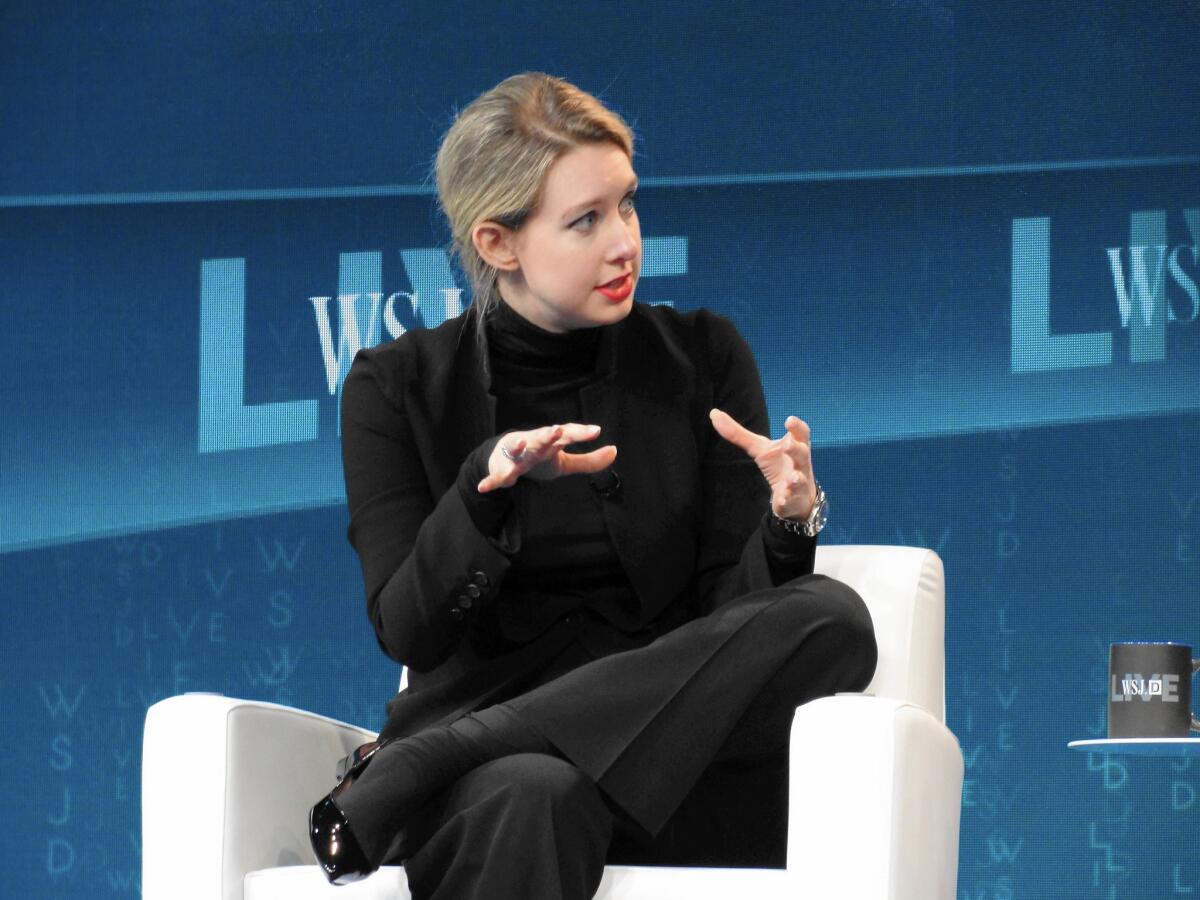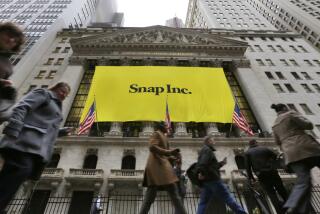Many ‘unicorn’ start-ups will struggle to live up to their potential

- Share via
It’s conventional wisdom in Silicon Valley that none of the so-called unicorn start-ups, valued at $1 billion and up, are actually worth their $1 billion (and higher) valuations. They will be, but they’re not right now.
That sounds crazy to an outsider, but it’s how venture capital investing works. High-growth, high-risk tech start-ups are given astronomical valuations based entirely on the promise of future growth. Venture capital is a high-risk asset class, so it’s supposed to be a stretch.
Snapchat’s venture investors say it’s worth $16 billion. But if the company went public today, Wall Street traders wouldn’t be so generous to a company with a target of $50 million in annual revenue and zero profits.
The company’s investors expect it to grow fast enough that eventually, Wall Street will believe it is worth $20 billion, or $30 billion (or $32 billion, if anyone in the latest round plans to double their money).
But not every unicorn is going to live up to its potential. Investors have warned of “dead unicorns” and “unicorpses” all year, and we’re already seeing the cracks: Commentators say $10-billion Dropbox is increasingly looking like a “feature, not a service,” $9-billion Theranos is battling a wave of questions about its technology, $1-billion Evernote has experienced executive turnover as it prepares to go public, $800-million Flipboard lost its top executives after several acquisition talks fell through, according to Bloomberg.
The closer we examine the country’s most valuable start-ups, the more flaws we see. The more flaws we see, the more we wonder whether even the most successful start-ups aren’t masking ugly dysfunction just beneath the surface.
The number one reason venture capitalists say the current tech boom is nothing like the dot-com bubble of the late ‘90s is that today’s highly valued start-ups are real businesses. The money-burning dot-coms from the last go-around went public with little or no revenue, so when it all collapsed, they went down to zero. But this time start-ups are pulling in revenue, building real businesses. They are disrupting hotels, taxis, housecleaning and data storage. If it all collapses, they won’t go down to zero, because “there’s a there there.”
Rather, the worst-case scenario is that the unicorns, which have created $500 billion in value to date, don’t live up to their valuations. All of them have to exit at some point; that’s how venture capital works.
For most, that means an initial public offering. Only a select handful of acquirers can afford to spend $1 billion or $10 billion on a start-up acquisition, and odds are Google, Facebook, Amazon and Apple already had the chance to buy the most attractive start-ups before they got this expensive.
But the IPO market is just as challenging as the mergers and acquisitions market. Fortune’s Steve Gandel recently crunched the numbers: If all 90 of the U.S.-based unicorns went public, selling a standard 35% of their shares at a 20% premium to their last valuation, IPO investors would have to buy $131 billion worth of newly issued shares.
Even spread over several years, that’s more than a stretch. Last year, only 22 tech companies went public, raising just $7.6 billion. The market for all IPOs this year so far is only $35 billion, down from the $56 billion average over the last 20 years.
When unicorns go public at lower valuations than their last round of funding, a few things happen.
For one, “ratchets” and other investor guarantees kick in. Many start-ups pay for their high valuations with lopsided terms that favor the latest investors. Some guarantee that the late-stage investors get paid out before any other shareholders. Others issue more shares to late-stage investors in the event of a lower valuation. In most cases, this hurts employees, founders and early-stage investors the most. (Some early-stage investors don’t know their shares were diluted by such provisions until after the IPO.)
Second, public market investors get skittish. The narrative of a high-growth rocket ship becomes a story of a battered, challenged question mark. Chief executives lose the benefit of the doubt. Top employees leave. Competitors move in.
If this begins to happen more frequently than not, it will become difficult for any start-up unicorn to go public.
When Fortune put a unicorn on its cover in January, I thought it might signal a peak. I was wrong — funding, especially at the late stage, only accelerated.
As we enter the next phase of the Age of Unicorns, many highly valued companies will struggle to live up to their valuations, meeting harsh scrutiny from the press, regulators, and future public market investors. Becoming a unicorn, it turns out, was the easy part.
Erin Griffith is a writer at Fortune.
Twitter: @eringriffith






